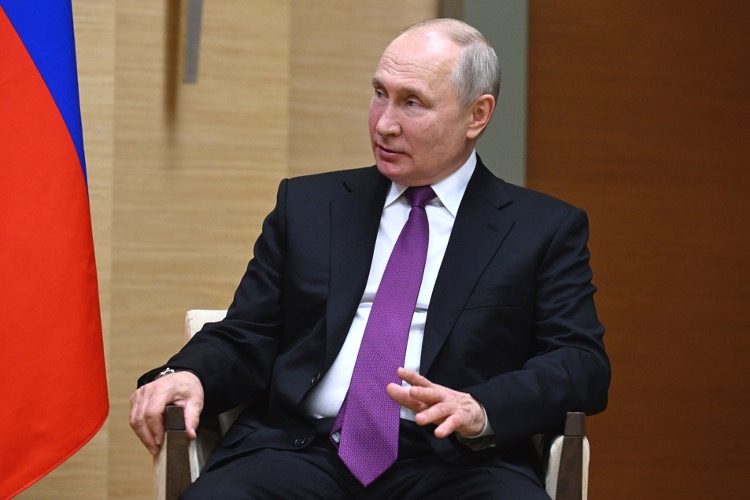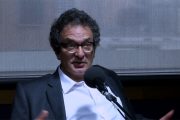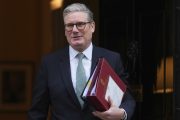
On October 4, news agency Reuters reported that the Eurozone’s economy contracted in the third quarter, with demand dropping at the most rapid pace in almost three years last month, quoting data gathered by S&P Global.
Notably, HCOB’s final Composite Purchasing Managers’ Index (PMI) for the EU, a measure signifying overall economic health, increased a bit to 47.2 in September from August’s 33-month low of 46.7. However, the figure remained below the 50 level, marking a contraction.
Meanwhile, output in the Eurozone has been declining for four consecutive months, led by a sharpening fall in manufacturing. Besides, the same S&P survey revealed that output dropped in the services sector.
Official data disclosed on October 4 indicated that retail sales in the euro area decreased more than expected in August, in a harbinger of faltering consumer demand amid soaring inflation. Meanwhile, September’s composite new business index, which keeps track of overall demand, nosedived to a historic low since November 2020.
“The drop in retail sales in August and weakness in the final PMIs for September are consistent with our view that the Eurozone economy will fall into recession in the second half of 2023,” Franziska Palmas at Capital Economics declared, as cited by Reuters.
Another poll purportedly displayed that manufacturing activity across countries sharing the euro remained in the doldrums in wake of falling demand.
That being said, more optimistic figures from S&P revealed that the employment index for services firms rose to 51.5 from 50.4.
“There is still a frenzy for workers in the services sector. Indeed, Eurozone firms bulked up their teams at a faster pace than in August. That is a head-turner, considering new business is in the doldrums,” Cyrus de la Rubia from Hamburg Commercial Bank said in statements to Reuters.
Earlier in September, The New American reported that Deutsche Bank CEO Christian Sewing warning that Germany could once again risk being called the “Sick Man of Europe” if the country does not solve its structural problems soon.
“We are not the ‘Sick Man of Europe,’” Sewing said, “but it is also true that there are structural weaknesses that hold back our economy and prevent it from developing its great potential.”
“We will become the sick man of Europe if we do not address these structural issues now,” he added, pointing out problems such as high and unpredictable energy costs, slow internet connections, outdated rail networks, a lack of skilled workers, overwhelming bureaucracy, and slow approval procedures.
By contrast, Russian President Vladimir Putin said on October 5 in a speech at the plenary session of the 20th annual meeting of the Valdai Discussion Club in Sochi that his country has endured Western pressure meant to jeopardize its economic growth. Instead, Russia has become stronger, Putin declared.
“In general, the situation is stable. We have overcome all the sanctions-related issues, and have started the next stage of [economic] development on a new basis, which is fundamentally important,” Putin declared.
The Russian leader also noted that Western trade sanctions have been fundamentally restructuring the Russian economy in a good way.
According to figures reported by the Russia Today (RT) news outlet, the Russian government noted more than 660 billion rubles ($6.6 billion) in budget surplus in the third quarter of 2023, with a deficit of around one percent of GDP for the year. The budget deficit is slated to remain at the same level in 2024 and 2025.
“We are coping. And I have reason to believe that we will cope in the future,” Putin said, also noting that unemployment in the country dropped to a record low of three percent. Also, the Russian leader claimed that disposable incomes in his country continued to increase, in contrast to the situation in the EU.
Additionally, Putin highlighted that, notwithstanding the rise in spending on defense and security, the Russian government did not trade “butter for guns,” fulfilling its social obligations and remaining self-sufficient in basic food supplies.
On October 8, RIA Novosti reported, citing Brazilian customs data, that Russian oil producers exported 84,400 metric tons of crude to Brazil last month, indicating the highest volume shipped from Russia to that country, a member of the BRICS grouping comprising Russia, India, China, and South Africa.
Crude oil exports to Brazil in September, the first shipments after a two-year halt, amounted to $48 million. In August 2021, Brazilian refineries imported 42,100 metric tons of crude from Russia worth $16.6 million.
Concurrently, Brazil’s imports of Russian petroleum products witnessed a month-over-month decline of 22 percent to 717,300 metric tons, while the value of shipments fell by 13 percent to $593.8 million. The drop came in light of Moscow’s recent decision to momentarily limit certain fuel exports to stabilize the domestic market.
Moscow’s prohibition on cross-border sales of gasoline and diesel materialized on September 21. Subsequently, the restrictions were lifted and Moscow permitted exports of diesel, but kept a ban on gasoline shipments out of Russia.
Owing to Western sanctions against Russia, the latter has been exploring alternative destinations for its energy exports over the past couple of years.
Brazil, together with India and China, emerged as one of the key buyers of Russian crude after the EU introduced sanctions on Russian oil. Nonetheless, unlike Russia’s partners in Asia, Brazil is a key oil producer and exporter that buys crude to cover local refining needs at times.
Furthermore, the EU, the G7 nations, and Australia erstwhile launched a $60-per-barrel price ceiling on Russian seaborne crude, forbidding Western firms from supplying insurance and other services to shipments of Russian crude, unless the cargo is bought at or below this arbitrary price. These measures were arguably meant to coerce Russia to continue exporting high volumes of oil to stop global prices from escalating, but also to decrease Moscow’s revenue garnered from selling its crude.
On October 7, Russia started natural-gas deliveries to Uzbekistan via Kazakhstan, Putin announced in a speech at a launch ceremony alongside his Kazakh and Uzbek counterparts, Kassym-Jomart Tokayev and Shavkat Mirzoyev.
Putin stated that the project was mutually beneficial as it would boost regional energy security. Although most of the flows would arrive in Uzbekistan, some of them would divert to north-eastern regions of Kazakhstan with a border straddling Russia.
“The implementation of this project will have obvious benefits for all three countries. Uzbekistan will get an additional source of energy, allowing it to guarantee an uninterrupted supply of heat and electricity to households and socially important facilities. Kazakhstan will be able to solve the issue of gasification of its northern and eastern regions; Gazprom is already working out appropriate routes and parameters of gas supply,” Putin declared at the ceremony.
In April, Russian Deputy Prime Minister Alexander Novak said that Moscow has redirected to Asian markets nearly 20 percent of the oil that had hitherto been provided to the EU.



